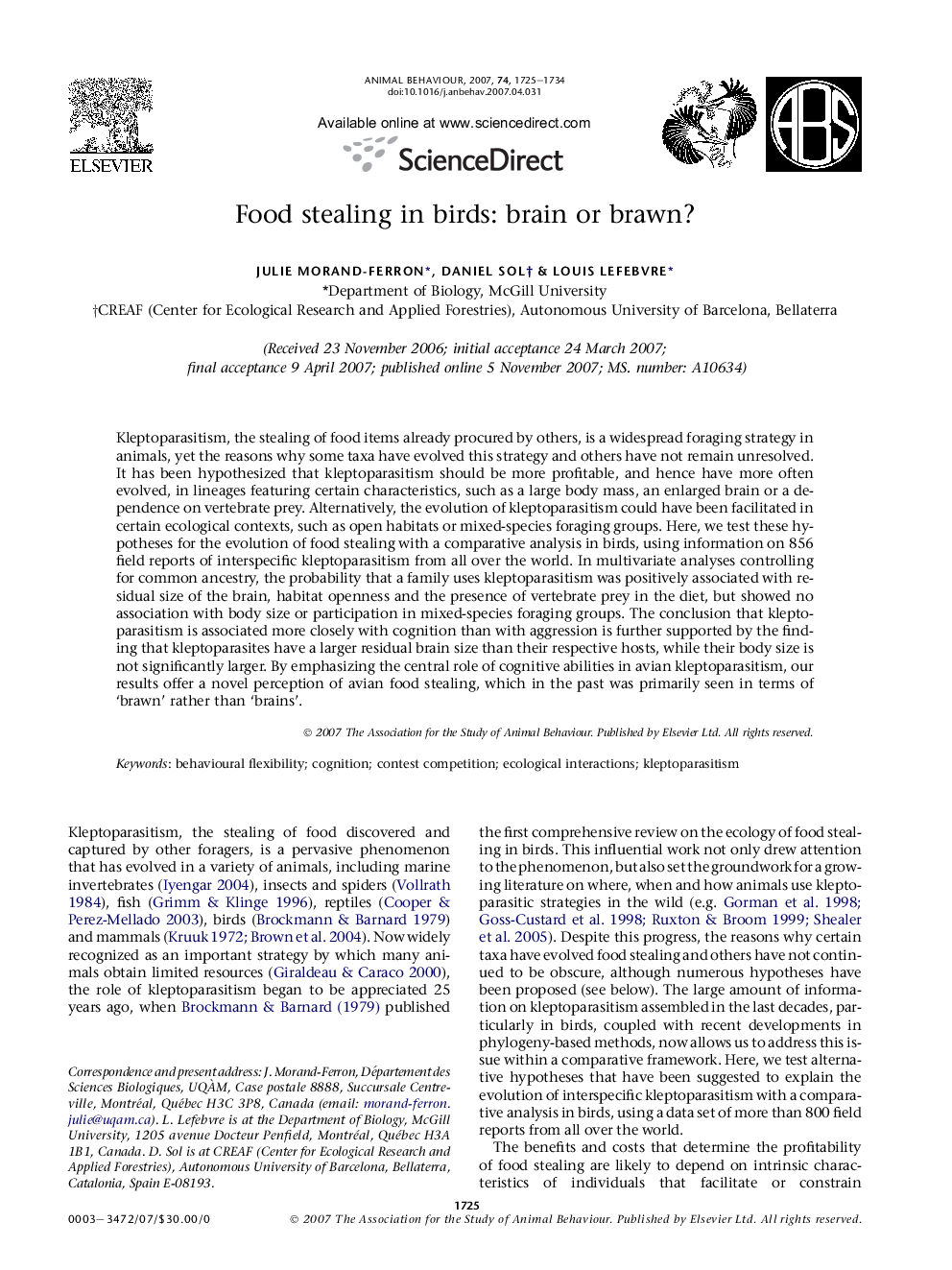| کد مقاله | کد نشریه | سال انتشار | مقاله انگلیسی | نسخه تمام متن |
|---|---|---|---|---|
| 2418111 | 1104337 | 2007 | 10 صفحه PDF | دانلود رایگان |

Kleptoparasitism, the stealing of food items already procured by others, is a widespread foraging strategy in animals, yet the reasons why some taxa have evolved this strategy and others have not remain unresolved. It has been hypothesized that kleptoparasitism should be more profitable, and hence have more often evolved, in lineages featuring certain characteristics, such as a large body mass, an enlarged brain or a dependence on vertebrate prey. Alternatively, the evolution of kleptoparasitism could have been facilitated in certain ecological contexts, such as open habitats or mixed-species foraging groups. Here, we test these hypotheses for the evolution of food stealing with a comparative analysis in birds, using information on 856 field reports of interspecific kleptoparasitism from all over the world. In multivariate analyses controlling for common ancestry, the probability that a family uses kleptoparasitism was positively associated with residual size of the brain, habitat openness and the presence of vertebrate prey in the diet, but showed no association with body size or participation in mixed-species foraging groups. The conclusion that kleptoparasitism is associated more closely with cognition than with aggression is further supported by the finding that kleptoparasites have a larger residual brain size than their respective hosts, while their body size is not significantly larger. By emphasizing the central role of cognitive abilities in avian kleptoparasitism, our results offer a novel perception of avian food stealing, which in the past was primarily seen in terms of ‘brawn’ rather than ‘brains’.
Journal: Animal Behaviour - Volume 74, Issue 6, December 2007, Pages 1725–1734